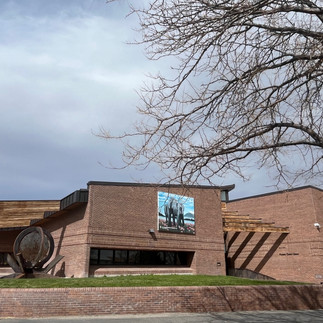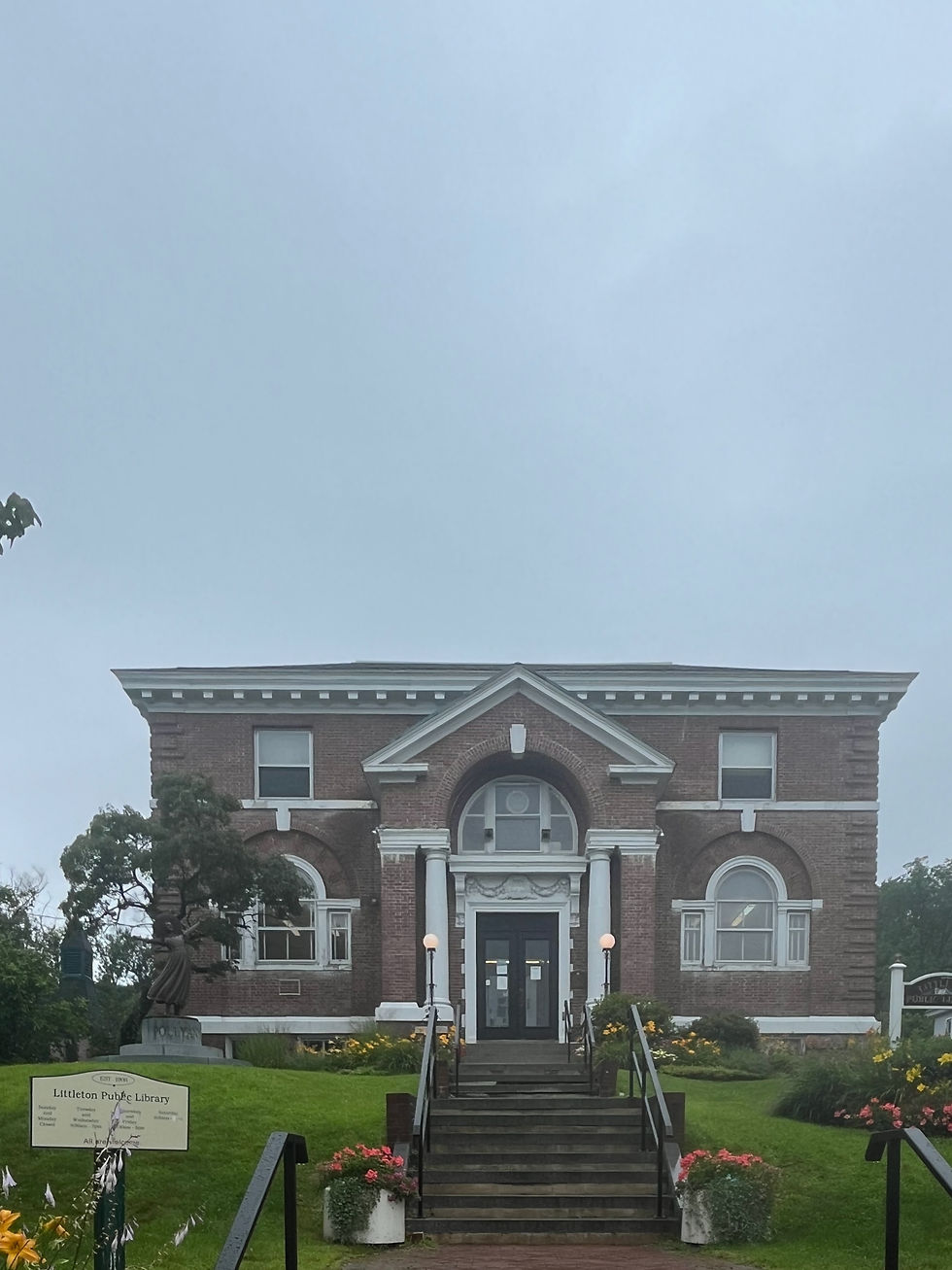Day 54, Sunday April 21, 2024: Casper, Wyoming to Jackson Hole, Wyoming
- Mark Carl Rom
- Apr 21
- 5 min read
Carnegie libraries visited: Lander, Wyoming
I was not bleeding out of my butt when I woke up this morning. I mean, I wasn’t expecting to, but when Chelsea Devantis began one chapter of her book I Shouldn't Be Telling You This (But I'm Going to Anyway) telling us that she was (bleeding from her butt, that is) it certainly caught my attention. Now that I think about it, I actually was bleeding from where the sun don’t shine when I was in Berkeley. For Chelsea, the cause was anxiety; for me, garden variety IBS that passed (!!!) pretty quickly. I do carry baby wipes with me when I travel, so that I can keep my butt as pampered as possible.
Today will be an easy 250 mile drive across central Wyoming from east to west, and any library I come across will likely be closed for the Sabbath. I would like to say that my route followed one of the historic wagon train trails, yet if I did say so I would be telling a porky pie, spinning a yarn, or shoveling the shit: I followed US Highway 26, which runs from Casper through the Wind River Reservation and then north to Jackson Hole. The route was paved, not rutted, and I never had to worry about where I would get my next drink (of water).

Three trails for the western expansion of white settlers did run through Casper: the Oregon Trail (f0r free land), the Mormon Trail (for freedom of religion), and the California Trail (for free gold, or the hope thereof). The closest I came to experiencing these trails, if not their hardship, was my visit to the National Historical Trails Interpretive Center. I remember all those who followed their dreams, through hope and misery, seeking what they wanted most from life. And also: these pioneers drove those who had lived there for millenia off their land.
Library observations: The front door of the City of Mills Bob Goff library was boarded shut. Its website says the library “officially reopened on June 27, 2020” and also that “the library is closed until further notice.” The Shoshoni library looks desolate, and I trust that it looks rosier on other days. Two elephants, in mural form, decorate the exterior of the Riverton library. The Crowheart library stands in silent witness to the Grand Tetons in the distance. Silent and lonely, as the library was inside a community center that has been permanently closed.
The Carnegie library in Lander looks like it could be in any city in the US named Lander, while it seems that there are no other such towns. I’m now realizing that Carnegie libraries were as recognizable in their day as McDonalds are in this day. No one has to tell me what that building is. The answer, obviously, is “a Carnegie library.”

The Lander Carnegie opened in 1908. Not until 1910, however, could books be checked out; to that point, the patrons had to read while there and, if lucky, seated by the fireplace. According to library lore, one early librarian lived in the basement. She loved cats and kept several of them. The odor reached into the Ladies Assembly Hall upstairs and so, after that librarian left, the basement was no longer a benefit to be offered.
The Grand Tetons pierce the ground like three arrow points heading to the sun. The view from Jenny Lake is one of the most iconic American vistas. Seeing those peaks as I drove down Wyoming Highway 26 took my breath away. I had never climbed them – one needs advanced mountaineering skills that I don’t possess – but I have hiked behind them twice.

In 1979, Alan, Kelly (“Zero”), and I hiked a loop around them, camping on snow for several days. We had extensive hiking experience, and yet none of us had camped on snow: Alan was from Alabama and Kelly from Missouri. We had rented ice axes for the trip and were eager to try them out. I was sick the entire time with (undiagnosed) strep and gobbled aspirin like Skittles to calm my throat.
One afternoon we were climbing up a steep slope, with Zero in the lead followed by Alan and me. Zero slipped and began sliding down. Unable to arrest himself with his ax, he accelerated towards the rocks below. In a blink, Alan moved out of Zero’s way. In the next blink, I sprawled down and jammed my ax in the snow. Zero slammed into me and stopped. In the moment of panic, Alan’s reactions moved him out of danger and mine led me into rescue. Neither of us had time to think. In this scene, I was the hero and Alan the goat. I have no idea why each of us reacted as we did, and I don’t doubt that on another day the roles could have been reversed. No one should feel confident about how they will react in a moment of crisis.
Force Majeure is a Swedish “dark comedy” film in which the comedy is so deeply hidden that I didn’t see any. In the critical scene Tomas, Ebba, and their young daughter Vera are having lunch on the balcony of a ski resort when a controlled avalanche is set off. As the avalanche roars toward them, giving the appearance that it will destroy the cafe, Tomas flees leaving Ebba and Vera to face their impending death, as they didn’t know the controlled avalanche would stop short of the restaurant. The rest of the movie involves the tension between Tomas and Ebba. He denies that he was running for his life, which was pretty stupid. If he had apologized, all would have been ok. Maybe: it’s a Swedish film.
I don’t think any of us should be certain that we would know what we would do in the conflict between self preservation and saving others. I can think of only one other time when I had to react in a do-or-die situation. When Kitt was still an infant in my arms, I took him to Safeway on a grocery shopping trip. When I started walking to the store, I tripped over a curb and fell forward. If I had not been carrying him, I would have used my hands to catch my fall and maybe break my wrists. The self-preservation instinct suggests that I would have dropped Kitt or, even worse, fallen on him to cushion the blow. Instead, I twisted awkwardly to land on my hips and shoulder, holding Kitt away from the danger. It happened so fast I didn’t have time to think. For me, the instinct to protect my child was stronger than the one to protect myself.














Comments